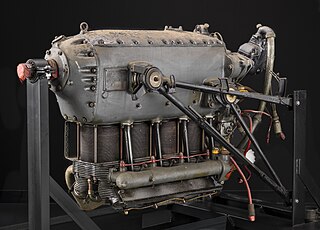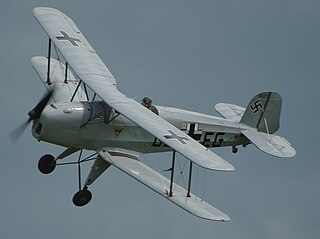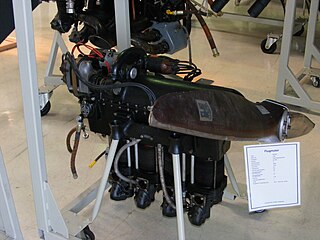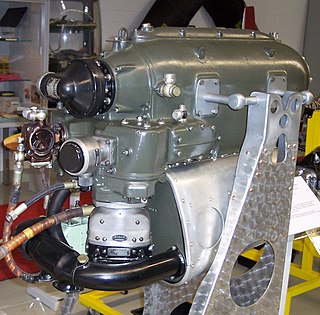
A motorjet is a rudimentary type of jet engine which is sometimes referred to as thermojet, a term now commonly used to describe a particular and completely unrelated pulsejet design.

The Yokosuka MXY-7 Ohka is a purpose-built, rocket-powered human-guided kamikaze attack aircraft employed by Japan against Allied ships towards the end of the Pacific War during World War II. Although extremely fast, the very short range of the Ohka meant that it had to be carried into action as a parasite aircraft by a much larger bomber, which was itself vulnerable to carrier-borne fighters. In action during the Battle of Okinawa in 1945, Ohkas were able to sink or damage some escort vessels and transport ships but no major warships were ever sunk. Improved versions which attempted to overcome the aircraft's shortcomings were developed too late to be deployed. Allied troops referred to the aircraft as "Baka Bombs".

The Hitachi Hatsukaze, also known as the Hitachi GK4, Hitachi Army Type 4 110hp Air Cooled Inline, Hitachi Ha47 and Ha-11 model 11 (unified), was Hitachi's fourth design in a series of aircraft engines built in Japan prior to and during World War II. The original Hatsukaze was a license-built Hirth HM 504. Hatsukaze engines were air-cooled, four-cylinder, inverted inline engines developing around 82 kW (110 hp).

Hirth Engines GmbH is an engine manufacturer based in Benningen, Germany. It is currently a part of the UMS Aero Group. Hirth began manufacturing aero engines in the 1920s, was taken over by Heinkel in WWII to develop the Heinkel-Hirth jet engines, and today specialises in small two-stroke engines for light aircraft and other applications.

The Mitsubishi J8M Shūsui is a Japanese World War II rocket-powered interceptor aircraft closely based on the German Messerschmitt Me 163 Komet. Built as a joint project for both the Navy and the Army Air Services, it was designated J8M (Navy) and Ki-200 (Army).
The Yokosuka MXY9 Shuka was a projected development of the MXY8 training glider, adding a small motorjet engine, the Tsu-11. It was intended to provide further training for pilots who were to fly the Mitsubishi J8M and Ki-200 rocket-powered interceptor aircraft.

The Ishikawajima Ne-20 was Japan's first turbojet engine. It was developed during World War II in parallel with the nation's first military jet, the Nakajima Kikka.

The Bücker Bü 131 Jungmann is a German 1930s basic training aircraft which was used by the Luftwaffe during World War II.

The Hirth HM 504 is a four-cylinder air-cooled inverted inline engine. The HM 504 was a popular engine for light aircraft of the 1930s-1940s, and it was used to power a number of Germany's trainer aircraft of World War II. The engine featured a cast magnesium alloy crankcase made of Elektron The Hitachi Hatsukaze Model 11 was a Japanese licensed version.

The Blackburn Cirrus Minor is a British four-cylinder, inverted, in-line air-cooled aero-engine that was designed and built by the Cirrus Engine Section of Blackburn Aircraft Limited in the late 1930s.

The Blackburn Cirrus Major is a British, inline-four aircraft engine that was developed in the late 1930s.
The Hirth HM 506 was a six-cylinder air-cooled inverted inline engine that was developed from the earlier four-cylinder HM 504. The HM 506 was a popular engine for light aircraft of the 1930s to 1940s and powered the Bücker Bü 133A model trainer. The engine featured a cast magnesium alloy crankcase.

The Hirth HM 60 was a four-cylinder inverted air-cooled inline aircraft engine designed in 1923 and first sold in 1924. The engine was of very high quality, and its sales success contributed to Hirth's rapid pre-war expansion. It was a popular engine for light aircraft delivering 80 hp (60 kW) at 2,300 rpm. Later Hirth engines built upon the HM 60's success and provided greater power with many of the same design features.

The de Havilland Gipsy Minor or Gipsy Junior is a British four-cylinder, air-cooled, inline engine that was used primarily in the de Havilland Moth Minor monoplane, both products being developed in the late 1930s.

The Blackburn Cirrus Bombardier is a British four-cylinder inline aircraft engine, developed and built by the Blackburn Aircraft company in the mid-1950s. The engine featured fuel injection.
The Tokyo Koku Ki-107 was a Japanese military training aircraft for the Imperial Japanese Army Air Force. The Ki-107 was a wooden-built low-wing two-seat monoplane with an open cockpit. Powered by a Hitachi Hatsukaze Ha-47 (Ha-11) inline piston engine it first flew in October 1943. The Japanese Army had ordered 450 as primary trainers as replacement for the Kokusai Ki-86, but production was held up by air raids and only 29 had been delivered by the end of the war.
Yokosuka is a city in Kanagawa Prefecture, Japan. Yokosuka may also refer to:

The Hirth HM 500 was a German four-cylinder air-cooled inverted inline engine developed from the Hirth HM 504 in 1938. Although developing the same output of the HM 504 (105 hp) and keeping the same capacity and bore, the HM 500 was a very different engine; the new HM 500 had a one-piece "closed" crankcase for simplified manufacture. The new cooling system reduced cylinder temperatures considerably, and the fuel consumption was also reduced. The HM 500 carried a twin-magneto instead of the two separate magnetos as on the old HM 504. All these changes made that the HM 500 resulted a 12% lighter than the HM 504 and the front surface 37% less than the previous HM 504.













